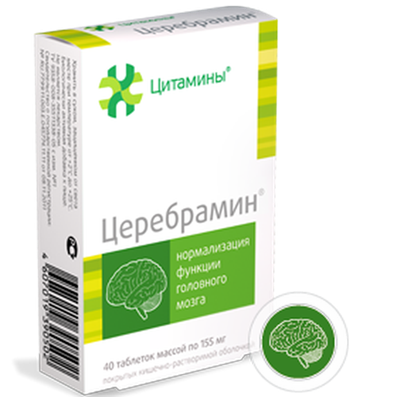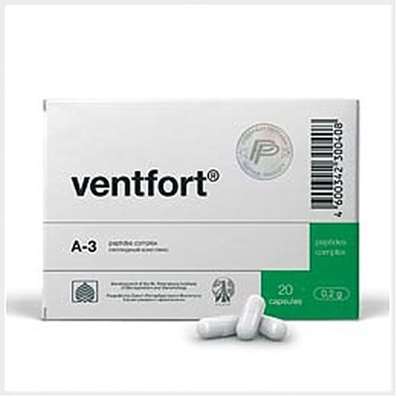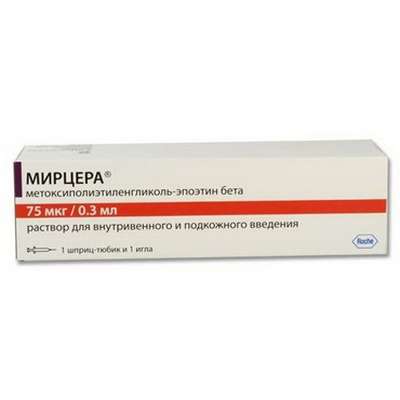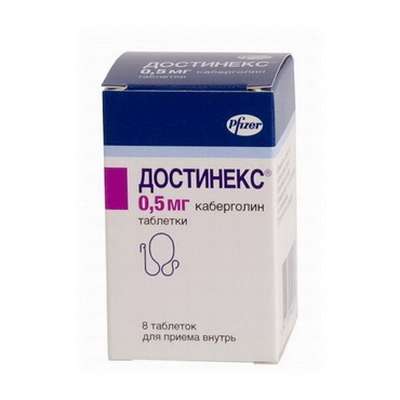Instruction for use: Ibuprofen-Hemofarm
I want this, give me price
Active substance Ibuprofen
ATX code M01AE01 Ibuprofen
Pharmacological group
NSAIDs - Propionic acid derivatives
Nosological classification (ICD-10)
G54.1 Disorders of lumbosacral plexus
Sciatica, Neurology radicular origin, spine Pathology, Sciatica lumbosacral, radiculoneuritis
G54.5 Neuralgic amyotrophy
Personeness-Turner's disease, Neural amyotrophy
J00 Acute nasopharyngitis [runny nose]
Viral rhinitis, Inflammation of the nasopharynx, Inflammatory diseases of the nose, purulent rhinitis, Nasal congestion, Nasal congestion with colds and flu, The difficulty of nasal breathing, The difficulty of nasal breathing for colds, Difficulty in nasal breathing, Difficulty in nasal breathing in colds, nasal, hypersecretion, cold, ARI with rhinitis phenomena, coryza, Acute rhinitis of various origins, Acute rhinitis with thick purulent mucous exudate, Acute nasopharyngitis, Swelling of the mucosa of the nasopharynx, Rhinitis, rhinorrhea, Infectious-inflammatory diseases of ENT organs, heavy cold, rhinopharyngitis, nasopharyngitis
J01 Acute sinusitis
Inflammation of the sinuses, Inflammatory diseases of the paranasal sinuses, Purulent inflammation of the paranasal sinuses, Infectious-inflammatory diseases of ENT organs, Infection of the sinuses, Combined sinusitis, Exacerbation of sinusitis, Acute inflammation of the paranasal sinuses, Acute bacterial sinusitis, Acute sinusitis in adults, Subacute sinusitis, acute Sinusitis, sinusitis
J02.9 Acute pharyngitis, unspecified
purulent pharyngitis, Acute nasopharyngitis,Limfonodulyarny pharyngitis
J03.9 Acute tonsillitis, unspecified (angina agranulocytic)
Sore throat infections, Acute tonsillitis, Angina, Follicular tonsillitis, Angina alimentary-hemorrhagic, Secondary sore throat, Sore throat primary, Angina follicular, Angina, Inflammatory diseases of the tonsils, Catarrhal angina, Lacunar angina, Acute Sore Throat, Tonsillitis, Tonsillitis acute, Tonsillar angina, Follicular sore throat, Bacterial tonsillitis
J04.0 Acute laryngitis
Lektorsky laryngitis, Acute catarrhal Laryngitis,Laryngitis is an acute abscess
K08.8.0 * Painful toothache
Dentinal pain, Dentinal pains, Pain pulpitis, Anesthesia in dentistry, Pain syndromes in dental practice, Pain after removal of tartar, Pain when extracting a tooth, Toothache, Pain after dental interventions
M06.9 Other specified rheumatoid arthritis
Rheumatoid arthritis,Pain syndrome in rheumatic diseases, Pain in rheumatoid arthritis, Inflammation in rheumatoid arthritis, Degenerative forms of rheumatoid arthritis, Children's rheumatoid arthritis, Exacerbation of rheumatoid arthritis, Acute articular rheumatism, Rheumatic arthritis, Rheumatic polyarthritis, Rheumatoid arthritis, Rheumatic polyarthritis, Rheumatoid arthritis, Rheumatoid arthritis of active course, Rheumatoid arthritis, Rheumatoid polyarthritis, Acute rheumatoid arthritis, Acute rheumatism
M10 Gout
Exacerbation of gout, Acute articular attack with gout, Acute gouty attack, Gouty attack, Recurrent gout attacks, Chronic gout
M15-M19 Osteoarthritis
M45 Ankylosing spondylitis
Ankylosing spondylarthrosis, Marie-Strumpel disease, Ankylosing spondylitis, Pain syndrome in acute inflammatory diseases of the musculoskeletal system, Pain syndrome in chronic inflammatory diseases of the musculoskeletal system, Bechterew's disease, Ankylosing spondylitis, Diseases of the spinal column, Rheumatic spondylitis, Bechterew-Marie-Strumpel disease
M47 Spondylosis
Spondyloarthrosis, spondylarthrosis, Diseases of the spinal column, spondylosis
M65 Synovitis and tendosynovitis
Acute tenosynovitis, Tendovaginitis (tenovaginitis), Tendosinovit (tenosynovitis), Tendovaginitis, Osteoarthritis in musculo-articular diseases, Inflammatory disease of soft tissues, Nonspecific tenosynovitis, Tendosinovit
M71 Other bursopathies
Bursitis, Bursopathy, Diseases of soft tissues, Osteoarthritis in musculo-articular diseases, Inflammatory disease of soft tissues, Subacute bursitis
M77.9 Other unspecified
Capsule, Periarthritis, Tendonitis, Tendopathy, Periarthropathy
M79.0 Other unspecified rheumatism
Degenerative rheumatic disease, Degenerative and rheumatic diseases of the tendons, Degenerative rheumatic diseases, Localized forms of rheumatism of soft tissues, Rheumatism, Rheumatism with a pronounced allergic component, Rheumatism of the articular and extraarticular, Rheumatic attack, Rheumatic complaints, Rheumatic diseases, Rheumatic disease of the spine, Relapses of rheumatism, Articular and extra-articular rheumatism, Articular and muscular rheumatism, Articular rheumatism, Articular syndrome with rheumatism, Chronic rheumatic pain, Chronic articular rheumatism, Rheumatoid diseases, Rheumatic diseases of the intervertebral disc
M79.1 Myalgia
Myofascial pain syndromes ,Pain syndrome in musculo-articular diseases, Pain syndrome in chronic inflammatory diseases of the musculoskeletal system, Pain in the muscles, Tenderness of muscles, Muscular soreness in severe physical exertion, Painful conditions of the musculoskeletal system, Pain in the musculoskeletal system, Pain in the muscles, Pain at rest, Muscle aches, Muscle pain, Musculoskeletal pain, Myalgia, Muscle pain, Muscle pain at rest, Muscle pain, Muscular pain of non-rheumatic origin, Muscle pain of rheumatic origin, Acute muscle pain, Rheumatic pain, Rheumatic pains, Myofascial syndrome, Fibromyalgia
M79.2 Neurology and neuritis, unspecified
Pain syndrome with neuralgia, Brachialgia, Occipital and intercostal neuralgia, Neuralgia, Neuralgic pain, Neuralgia, Neuralgia of intercostal nerves,Neuralgia of the posterior tibial nerve, Neuritis, Neuritis traumatic, Neuritis, Neurological Pain Syndromes, Neurological contractures with spasms, Acute neuritis, Peripheral neuritis,Post-traumatic neuralgia,Severe pain of a neurogenic nature, Chronic neuritis, Essential neuralgia
M79.3 Panniculitis, unspecified
Panniculitis
N70 Salpingitis and oophoritis
Adnexitis, Inflammatory diseases of female genitalia, Inflammatory diseases of female genital organs, Infection of the genitals, Oophoritis, Acute adnexitis, Salpingitis, Salpingo-oophoritis, Chronic inflammatory diseases of the ovaries, Inflammation of the ovaries
N94.6 Dysmenorrhea Unspecified
Pain during menstruation, Functional disorders of the menstrual cycle, Menstrual cramps, Emmeniopathy, Pain during menstruation, Painful menstrual irregularities, algomenorrhea, algomenoreya, Pain smooth muscle spasm, Pain spasm of smooth muscles (renal and biliary colic, intestinal spasms, dysmenorrhea), Pain spasm of smooth muscles of internal organs (kidney and biliary colic, intestinal spasms, dysmenorrhea), Disalgomenoreya, dysmenorrhea, Dysmenorrhea (essential) (Exfoliative), menstrual disorder, menstruation painful, metrorrhagia, Violation of the menstrual cycle, Menstrual irregularities, Prolaktinzavisimoe menstrual disorders, Prolaktinzavisimoe menstrual dysfunction, Pain spasm of smooth muscles of internal organs, Spasmodic dysmenorrhea, Primary disalgomenoreya
R50 Fever of unknown origin
Malignant hyperthermia, Hyperthermia malignant
R51 Headache
Pain in the head, Cephalgia, Pain with sinusitis, Pain in the back of the head, Painful headache, Headache of vasomotor genesis, Headache of vasomotor origin, Headache with vasomotor disorders, Headache, Neurological headache, Serial headache
R52.0 Acute pain
Acute pain syndrome, Acute pain syndrome with osteoarthritis, Acute pain syndrome of traumatic origin, Severe pain of a neurogenic nature, Severe pain, Pain syndrome at delivery
R52.2 Other constant pain
Pain syndrome, rheumatic origin, Pain at vertebral lesions, Pain in the chamber, Pain for burns, Pain syndrome weak or moderate, Perioperative pain,Moderate to severe pain, Moderately or weakly expressed pain syndrome, Moderate to severe pain, Ear pain of otitis, Neuropathic pain, neuropathic pain
T14.0 Surface injury of unspecified body region
Abrasions, Scratch, Skin Wounds, Wounds of soft tissues, Hematoma, Hematoma of traumatic origin, Hematomas, Hematomas of muscles, Hematomas of soft tissues, Healing of the skin, Bruise, Bruising due to sprains and bruises, Microtrauma, External bruises, Small combing, Superficial hematoma, Superficial damage to the skin and mucous membranes, Subcutaneous hematoma, Post-traumatic hematoma, Post-traumatic disturbance of microcirculation, Skinness of the skin, Traumatic plexus lesions, Injury, Contusion of soft tissues, Joint bruise, Traumatic bruises, Traumatic injury, Primary treatment of surface contaminated wounds, Abrasion, Bruise
T14.3 Dislocation, sprain and damage to the capsular-ligamentous apparatus of the joint of the unspecified area of the body
Painful stretching of muscles, Pain and inflammation in tension, Dislocation of dislocation, Degenerative changes in the ligamentous apparatus, Edema due to sprains and bruises, Edema after interventions for sprains, Damage and rupture of ligaments, The musculoskeletal system is damaged, Damage to ligaments, Damage to the joints, Ligament ruptures, Tendon tendons,Ruptures of the tendons of muscles,Stretching, Crick, Stretching of the muscle, Sprain, Tension of the tendons, Extensions,Stretch muscles, Sprains, Tension of the tendons, Injury of the musculoskeletal system, Injuries to the joints, Injuries of capsule-articular tissues, Injuries of the osteoarticular system, Injuries to ligamentsInjuries to the joints, Joint wounds, Stretching of the ligamentous apparatus, Habitual stretching and tearing
Composition and form of release
Tablets, coated with a coating.
ibuprofen 400 mg
auxiliary substances: MCC; sodium carboxymethyl starch; silicon dioxide colloidal anhydrous; stearic acid; eudragit L; talc; titanium dioxide; polysorbate 80
in a blister of 10 pcs .; in a pack of cardboard 1, 2, 3 or 5 blisters.
Tablets for the preparation of fizzy drink 1 effervescent tablets.
ibuprofen (as lysinate) 200 mg
auxiliary substances: sodium carbonate; sodium dihydrocitrate; sodium bicarbonate; Povidone K25; sodium saccharin; aspartame; xylitol; lemon flavor; silicone emulsion
plastic tube 10 or 20 pieces; in a pack of cardboard 1 tuba.
Description of dosage form
The tablet is covered with a shell, from white to yellowish white, with a risk on one side, round, biconvex.
The tablet is effervescent round from white to yellowish white with a faint smell of lemon.
pharmachologic effect
Pharmacological action - anti-inflammatory, antipyretic, analgesic.
It blocks cyclooxygenase I and II, suppresses synthesis of PG. It shows antiaggregant activity. Reduces pain syndrome, incl. pain in the joints at rest and during movement, reduces morning stiffness and swelling of the joints, contributes to an increase in the volume of movements.
Pharmacokinetics
It is well absorbed when taken orally (absorption decreases slightly when taken after a meal). After absorption, about 60% of the pharmacologically inactive R-form is slowly transformed into an active S-form (biological activity is associated with the S-enantiomer). Cmax in blood plasma when taken on an empty stomach is reached after 45 minutes, when taken after meals - after 1,5-2,5 h, in the synovial fluid, where a higher concentration is created than in blood plasma - 2-3 hours. Binding to blood proteins - 90%. Exposed to the systemic and post-systemic metabolism in the liver. Slowly penetrates into the joint cavity, is retained in the synovial fluid. It is excreted by the kidneys (in an unchanged form not more than 1%) and with bile (to a lesser extent). T1 / 2 - 2-2,5 h (for retard forms - up to 12 h). In elderly patients, the pharmacokinetic parameters do not change.
Indications
Rheumatoid arthritis, osteoarthrosis, articular syndrome with exacerbation of gout, psoriatic arthritis, Bechterew's disease (ankylosing spondylitis), spondylosis; neuralgia, myalgia, tendonitis, bursitis, tendovaginitis, neural amyotrophy of Charcot-Marie-Tooth (peroneal muscular atrophy), sprain of the ligamentous apparatus, hematoma, radiculitis, traumatic lesion of soft tissues and musculoskeletal system; febrile conditions of various genesis (including after immunization), with influenza and ARVI.
As an auxiliary for infectious and inflammatory diseases of ENT organs (tonsillitis, pharyngitis, laryngitis, sinusitis, rhinitis), inflammation in the pelvis, adnexitis, algodismenorea, postoperative pain syndrome, headache and toothache, panniculitis.
Contraindications
Hypersensitivity, erosive and ulcerative diseases of the gastrointestinal tract (including peptic ulcer, Crohn's disease - ulcerative colitis), optic nerve, scotoma, amblyopia, impaired color vision, hearing loss, vestibular apparatus pathology, "aspirin" asthma (provoked admission of acetylsalicylic acid or other NSAIDs), heart failure, edema, hypertension, blood clotting disorders (including hypocoagulation), hemophilia, leukopenia, hemorrhagic diathesis, glucose deficiency 6-phosphate dehydrogenase, pregnancy (III trimester).
pregnancy and lactation
Contraindicated in the III trimester of pregnancy, in the I and II trimester - with caution. During the period of breastfeeding, the use of the drug is possible (with caution).
Side effects
On the part of the digestive system: nausea, vomiting, NSAID-gastropathy (decreased appetite, pain and discomfort in the epigastric region, abdominal pain), irritation, dryness of the oral mucosa or pain in the oral cavity, ulceration of the gingival mucosa, aphthous stomatitis, pancreatitis , constipation / diarrhea, flatulence, digestive disorders, possibly - erosive and ulcerative lesions and bleeding from the gastrointestinal tract, impaired liver function.
From the nervous system and sensory organs: headache, drowsiness, anxiety, nervousness, irritability, psychomotor agitation, confusion, hallucinations, aseptic meningitis (more often in patients with autoimmune diseases); hearing impairment, ringing in the ears, reversible toxic amblyopia, blurred vision or dizziness, dryness and irritation of the eyes, edema of the conjunctiva and eyelids (allergic genesis), scotoma.
From the cardiovascular system and blood (hematopoiesis, hemostasis): heart failure, tachycardia, increased blood pressure, eosinophilia, anemia, incl. hemolytic, thrombocytopenic purpura, agranulocytosis, and leukopenia.
On the part of the respiratory system: dyspnea, bronchospasm, allergic rhinitis.
On the part of the genitourinary system: edematous syndrome, impaired renal function, acute renal failure, allergic nephritis, polyuria, cystitis.
Allergic reactions: skin rash (erythematous, urticaria), skin itching, urticaria, Quincke's edema, anaphylactic reactions, incl. anaphylactic shock, multiforme exudative erythema (including Stevens-Johnson syndrome), toxic epidermal necrolysis.
Other: increased sweating, fever.
Interaction
Microsomal oxidation inductors (ethanol, barbiturates, rifampicin, tricyclic antidepressants) increase the production of hydroxylated active metabolites, increasing the risk of developing severe hepatotoxic reactions. Inhibitors of microsomal oxidation reduce the risk of hepatotoxic action. Reduces the hypotensive activity of vasodilators, incl. blockers of slow calcium channels and ACE inhibitors), natriuretic and diuretic activity of furosemide and hypothiazide, the effectiveness of uricosuric drugs. Strengthens the effect of antiaggregants, fibrinolytics (increased risk of hemorrhagic complications), oral hypoglycemic agents and insulin. When interacting with mineralo- and glucocorticosteroids, colchicine, estrogen, ethanol, ulcerogenic effects may occur with the development of bleeding. Antacids and cholestyramine lower the absorption of ibuprofen. Increases the concentration of digoxin, phenytoin, methotrexate, lithium in blood plasma. Caffeine increases the analgesic effect. With simultaneous administration with acetylsalicylic acid lowers the overall anti-inflammatory effect. When administered with thrombolytic agents (alteplase, streptokinase, urokinase), the risk of bleeding increases at the same time. Cefamandol, cefaperazone, cefotetan, valproic acid, plikamycin increase the frequency of hypoprothrombinemia. Cyclosporine and gold preparations increase the effect of ibuprofen on the synthesis of PG in the kidneys and increase nephrotoxicity. Ibuprofen increases the plasma concentration of cyclosporine and the likelihood of its hepatotoxic effects. Drugs that block tubular secretion, lower the excretion and increase the plasma concentration of ibuprofen. With simultaneous use with potassium-sparing diuretics, the risk of hyperkalemia increases, with other NSAIDs - the risk of side effects from the gastrointestinal tract.
Dosing and Administration
Inside, after eating, the effervescent tablet should be completely dissolved in a glass of water (the resulting solution is immediately drunk). The dose is administered individually so that the desired therapeutic effect is obtained by applying the smallest possible dose.
Adults and children over 12 years. For acute pain - 200-400 mg every 4-6 hours; at a fever - an initial dose of 200 mg every 4-6 hours, if necessary - 400 mg every 4-6 hours; with rheumatoid arthritis - 2.4-3.2 g / day in 4-6 receptions. The maximum daily dose is 40 mg / kg.
Children from 6 months to 12 years. When fever - 5-10 mg / kg / day in 4-5 receptions, treatment should not last more than 3 days without consulting a doctor; with juvenile rheumatoid arthritis, children weighing less than 20 kg - 400 mg / day in 4-5 receptions, body weight 20-30 kg - 600 mg / day, body weight 30-40 kg - 800 mg / day, more than 40 kg - dosage as for adults.
Effervescent tablets are recommended for children older than 6 years and adults.
Overdose
Symptoms: abdominal pain, nausea, vomiting, retardation, drowsiness, depression, headache, tinnitus, metabolic acidosis, coma, acute renal failure, lowering blood pressure, brady / tachycardia, atrial fibrillation, stopping breathing.
Treatment: gastric lavage (only for 1 hour after intake), activated charcoal, alkaline drink, forced diuresis, symptomatic therapy (correction of KHS, AD).
Precautionary measures
During treatment, it is necessary to monitor the picture of peripheral blood and the functional state of the liver and kidneys. When symptoms of gastropathy appear, careful monitoring including esophagogastroduodenoscopy, a blood test with determination of hemoglobin, hematocrit, analysis of feces for latent blood is shown. To prevent the development of NSAIDs, gastropathy is recommended to be combined with preparations containing misoprostol. If it is necessary to determine 17-ketosteroids, the drug should be discontinued 48 hours before the test. It should be used with caution in case of hyperbilirubinemia, liver cirrhosis with portal hypertension, gastric ulcer and duodenal ulcer (in the anamnesis), gastritis, enteritis, colitis, hepatic and / or renal failure, nephrotic syndrome, blood diseases of unknown etiology, pregnancy, breast-feeding, children under 12 years. With caution apply during work drivers of vehicles and people whose profession is associated with increased concentration of attention. During the period of treatment, ethanol is not recommended.
storage Conditions
In a dry place, at a temperature of 15-25 ° C.
Keep out of the reach of children.
Shelf life
tablets, film-coated 400 mg - 3 years.
tablets coated with a film coat 400 mg - 4 years.
tablets effervescent 200 mg - 3 years.
Do not use after the expiry date printed on the package.

 Cart
Cart





